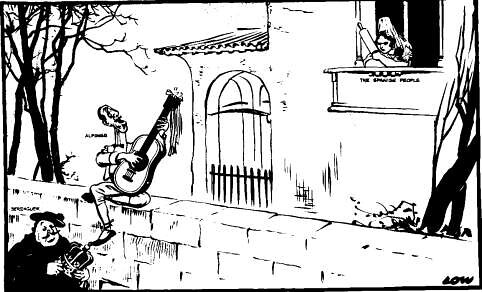
Purpose: To satirize Franco's fascist form of government and poke fun at his administration's attempt to detach itself from Mussolini-ism
Value: The cartoon illustrates the absurdity/naivete inherent in Franco's desire to differentiate Spanish fascism from Italian fascism
Limitations: It's clearly from an American or British perspective - the criticism is not particularly insightful and is designed to appeal to those who already dislike a Franco-controlled Spain














